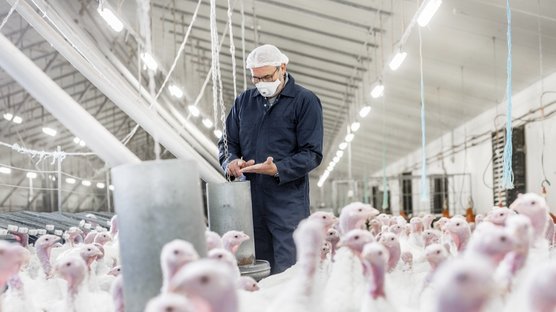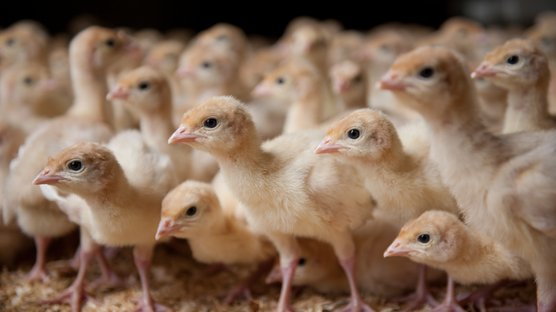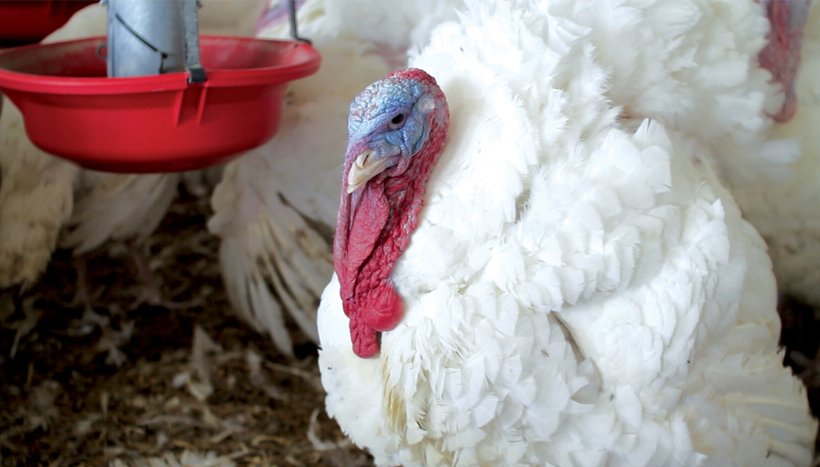
Published on Dec. 13, 2022
Hybrid Turkeys publishes new European nutrition guidelines
The nutritional guidelines provided by Hybrid Turkeys are essential to ensure optimal performance of our breed. Therefore, we have updated these guidelines to meet the needs of our new medium and heavy strains designed for the European market.
The update of the guides mentioned in this article pertain to the EMEA zone (Europe, Middle East, and Africa). In 2023 we will finalize the update to the guides for the North American zone. The launch of separate guidelines, based on geographic region, is designed to take into account the unique raw materials used in each zone, the differences in management, and offer different formulations to meet the needs of each customer.
In the current economic context, the increase in feed costs due to inflation on the price of raw materials and energy impacts the profitability of all, so these new specification propose a reduction in feed costs without impacting performance.
Commercial Turkey Nutrition Updates
We have established customized ranges for nutrition guidelines, Low, Medium and High energy diets. The Medium Energy guideline corresponds to the ideal recommendations, offering customers a more moderate cost, while optimizing performance.
The customized low or high energy ranges are designed to meet varying needs according to the context of each customer. For these guidelines please contact our nutrition experts directly.
In addition to these new guidelines, various nutrition trials are underway to measure the performance associated with our new Grade MakerEVO and ConverterNOVO strains.
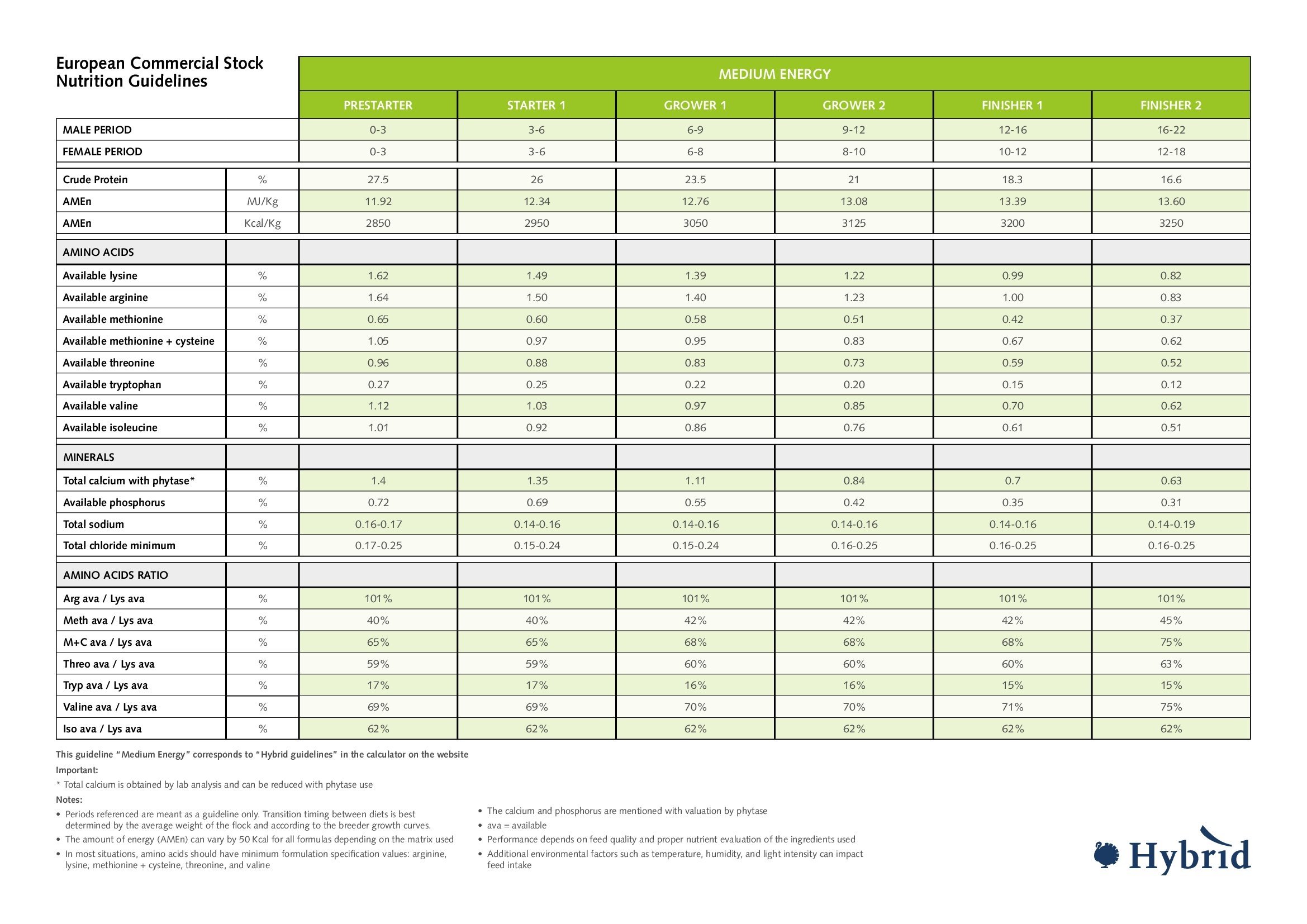
Turkey Breeder Nutrition updates
The new breeder nutrition guidelines cover both the rearing and the production (laying) phases and include different recommendations based on heavy versus medium strains of turkeys.
In the rearing guidelines, the 'Holding 2' phase is intended to be used if the weight of the flock is below the standard. The goal is to maintain the weight of our animals at the expected level as early as possible in order to improve the laying performance.
Similar to the commercial nutrition guidelines, reducing costs and maximizing performance are key components of the changes made. The overall levels of crude protein and amino acids have been reviewed in order to help our animals reach our standard as simply and efficiently as possible.
An important change to the 'Production' guidelines is the 'Female Layer 3' diet. This diet was added to address the unique needs during the Summer Period (+30°C) to ensure optimized performance.
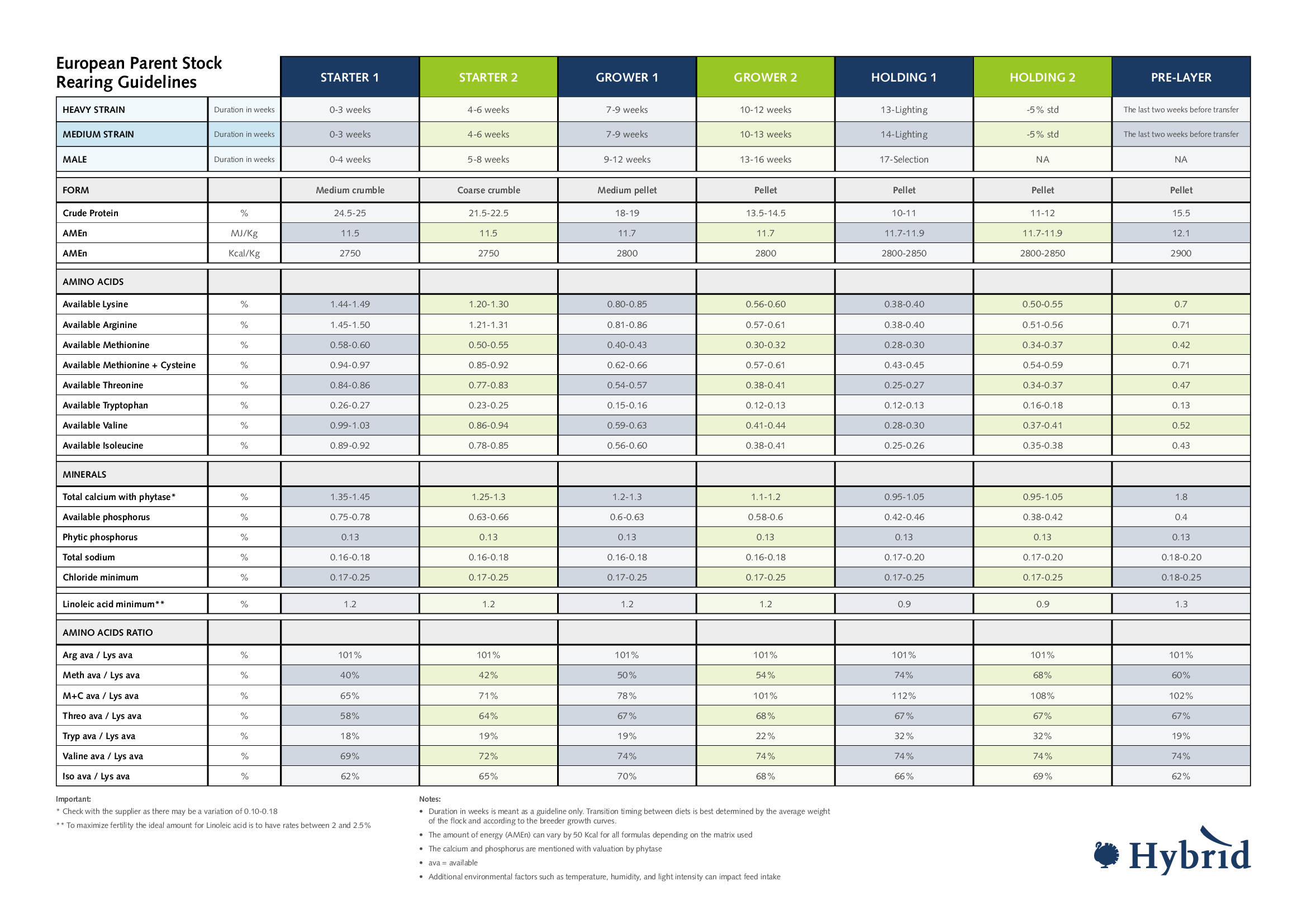
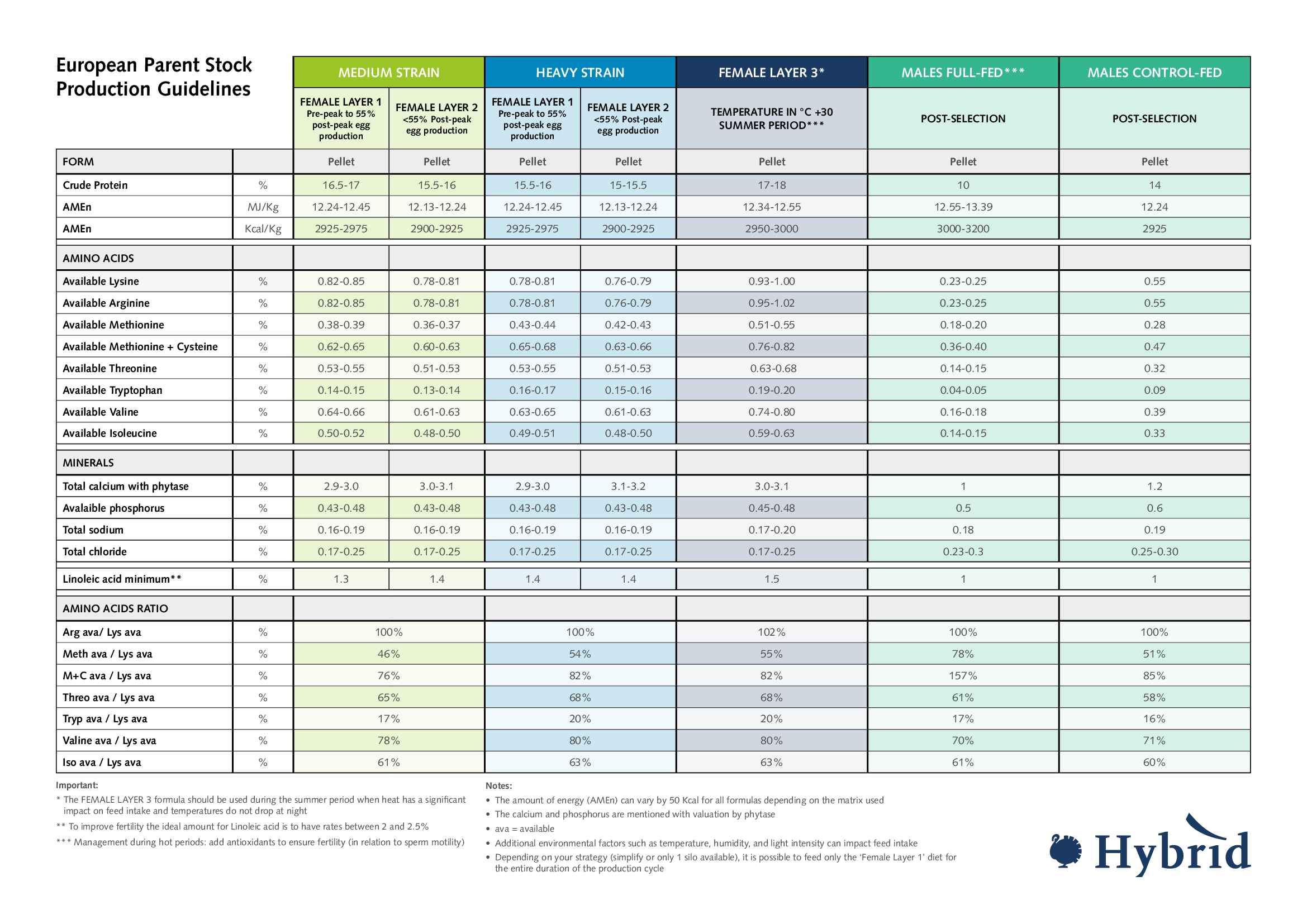
The objective of the updates are to improve feed conversion, while reducing calcium and phosphorus levels. In addition to the cost savings of this change, this solution offers the following performance benefits:
- Reduction of litter discharge due to the elimination of excess calcium and phosphorus by renal excretion
- Reduction of locomotor problems related to litter degradation
- Improved animal welfare: better digestive health and drier litter
- Improved FCR due to reduced buffering capacity of the gizzard as a result of reduced calcium
- Reduction of phosphate waste and, therefore, reduction of water eutrophication
In summary, the new Hybrid Turkeys nutritional guides will allows for better overall absorption of nutrients, in particular proteins, while maximizing the health and well-being of the animals. The overall objective of this update is to offer solutions to combat the changing economic context, by reducing the costs of breeding while optimizing performance, thus ensuring everyone can maximize their profitability.


